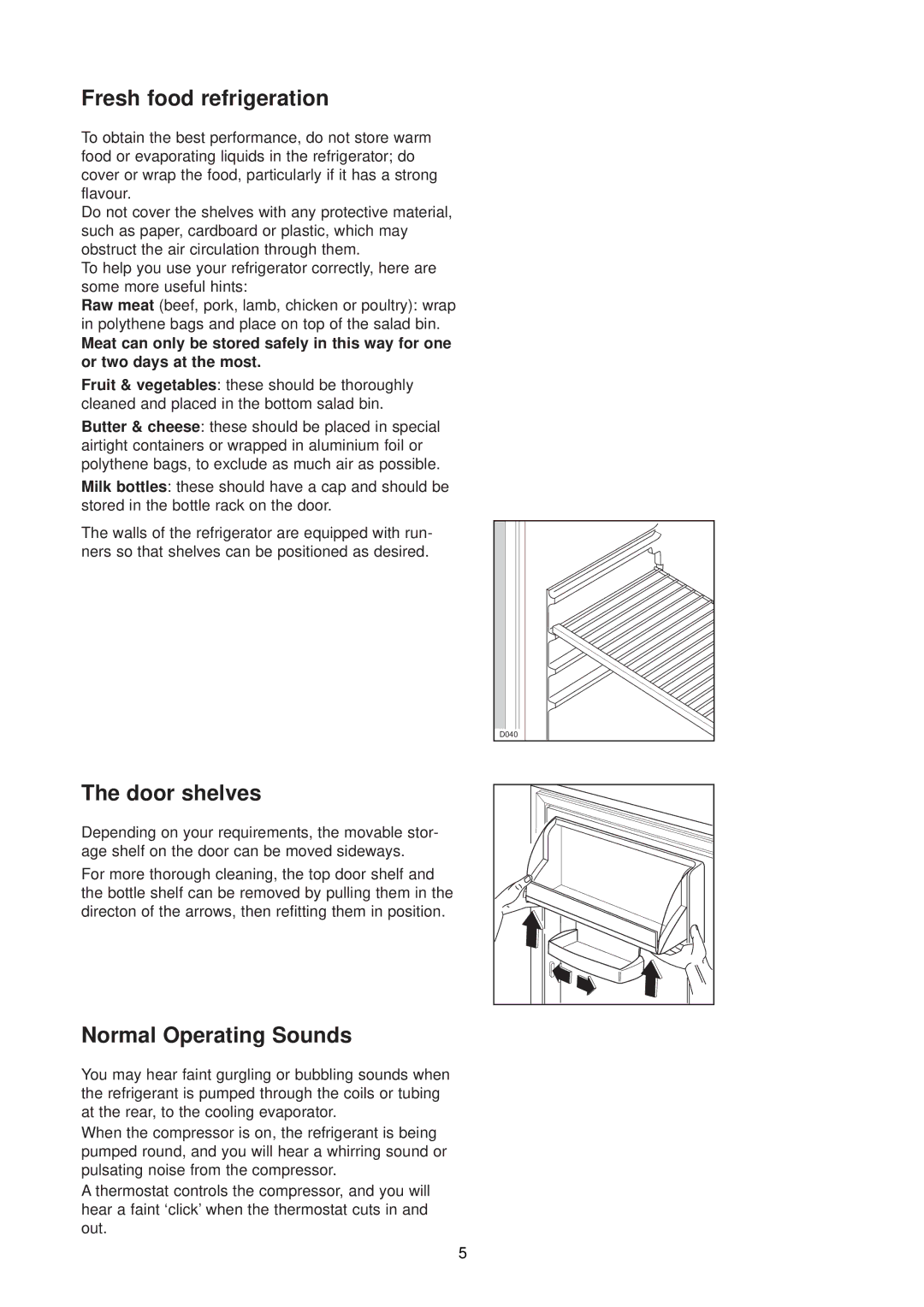
Fresh food refrigeration
To obtain the best performance, do not store warm food or evaporating liquids in the refrigerator; do cover or wrap the food, particularly if it has a strong flavour.
Do not cover the shelves with any protective material, such as paper, cardboard or plastic, which may obstruct the air circulation through them.
To help you use your refrigerator correctly, here are some more useful hints:
Raw meat (beef, pork, lamb, chicken or poultry): wrap in polythene bags and place on top of the salad bin.
Meat can only be stored safely in this way for one or two days at the most.
Fruit & vegetables: these should be thoroughly cleaned and placed in the bottom salad bin.
Butter & cheese: these should be placed in special airtight containers or wrapped in aluminium foil or polythene bags, to exclude as much air as possible.
Milk bottles: these should have a cap and should be stored in the bottle rack on the door.
The walls of the refrigerator are equipped with run- ners so that shelves can be positioned as desired.
The door shelves
Depending on your requirements, the movable stor- age shelf on the door can be moved sideways.
For more thorough cleaning, the top door shelf and the bottle shelf can be removed by pulling them in the directon of the arrows, then refitting them in position.
D040 |
Normal Operating Sounds
You may hear faint gurgling or bubbling sounds when the refrigerant is pumped through the coils or tubing at the rear, to the cooling evaporator.
When the compressor is on, the refrigerant is being pumped round, and you will hear a whirring sound or pulsating noise from the compressor.
A thermostat controls the compressor, and you will hear a faint ‘click’ when the thermostat cuts in and out.
5
